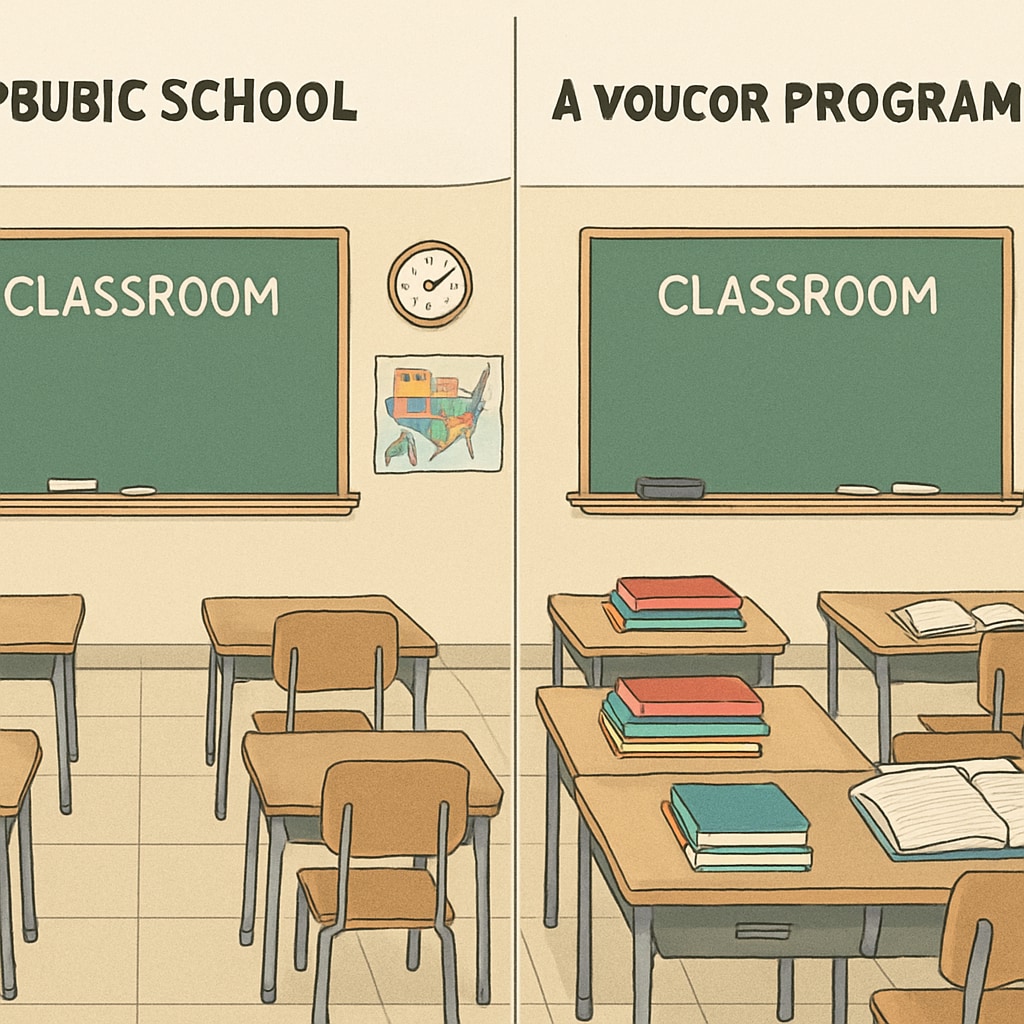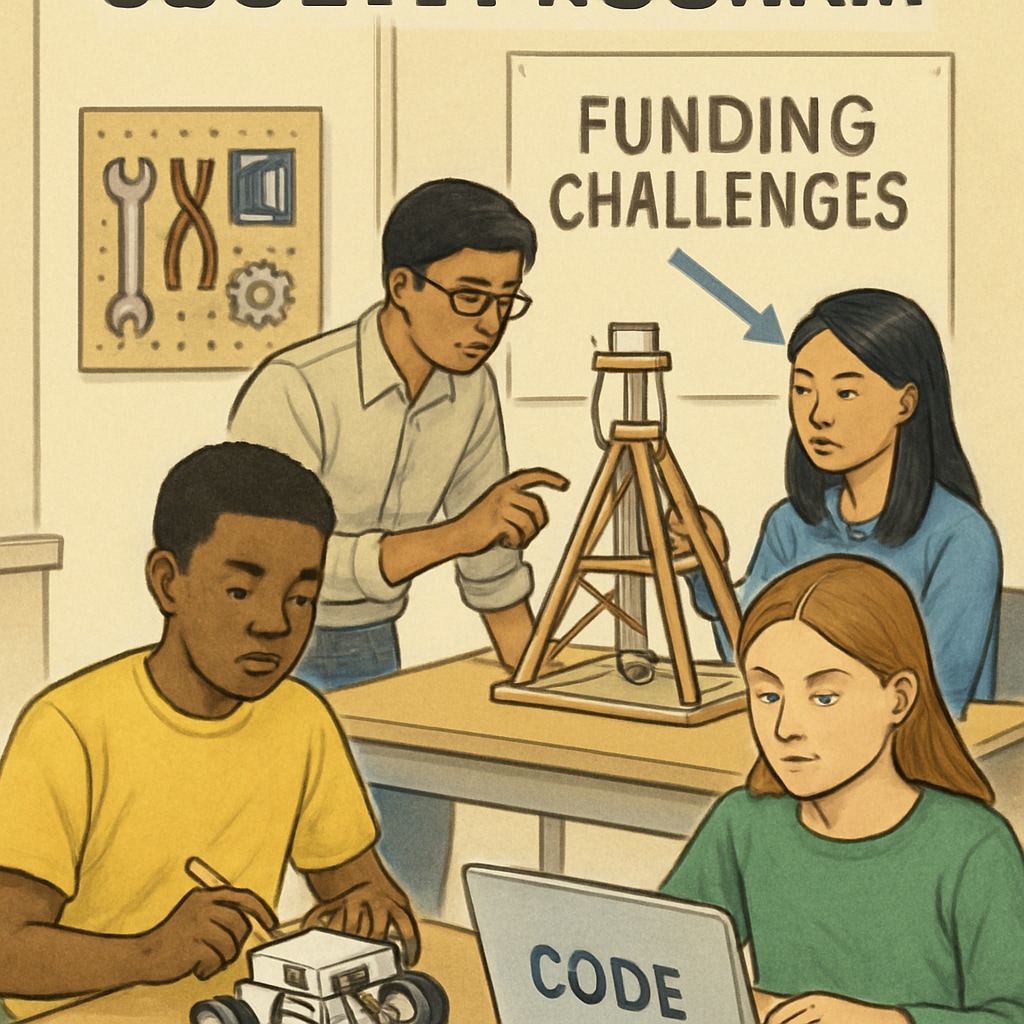The expansion of school voucher programs across the United States is creating a significant shift in how education funding is allocated. With these programs diverting public funds to private and charter schools, public school systems are experiencing mounting financial pressure. This article delves into the widespread effects of this policy, exploring its impact on public education and discussing innovative strategies schools are adopting to stay competitive in an evolving educational landscape.
The Financial Impact of School Voucher Programs on Public Education
School voucher programs allow parents to use publicly funded vouchers to offset tuition fees at private institutions. While proponents argue that this increases parental choice and promotes competition, critics highlight the financial strain on public schools. For example, as funds are redirected to private institutions, public schools are left with fewer resources to support their students. This creates a ripple effect, where schools in lower-income districts, already struggling with limited budgets, face even greater challenges in providing quality education.
According to Britannica, voucher programs often lead to a disproportionate impact on underfunded schools, increasing educational inequity. Public schools must manage fixed costs, such as teacher salaries, infrastructure maintenance, and extracurricular programs, even as their budgets shrink. As a result, they may need to cut programs, increase class sizes, or reduce staff, all of which negatively affect student outcomes.

Public Schools’ Innovative Responses to Funding Challenges
In response to the challenges posed by voucher programs, public schools are implementing creative strategies to maintain their appeal and effectiveness. These approaches often focus on enhancing academic offerings, improving community engagement, and fostering partnerships with local organizations. Below are some of the key strategies:
- Specialized Programs: Many public schools are introducing specialized curricula, such as STEM (Science, Technology, Engineering, and Math) tracks, dual-language programs, and arts integration, to attract and retain students.
- Community Partnerships: Collaborations with local businesses and nonprofits help fund extracurricular activities, provide mentorship opportunities, and support career readiness programs.
- Enhanced Teacher Training: Investing in professional development ensures that teachers remain equipped with innovative teaching methods, which can improve student performance and satisfaction.
These strategies not only address funding gaps but also position public schools as competitive options for families considering private education.

Balancing Parental Choice and Public Education Sustainability
The broader debate surrounding school voucher programs centers on balancing parental choice with the sustainability of public education. While the freedom to choose a school that aligns with a child’s needs is crucial, policymakers must also address the systemic challenges these programs create. This requires legislative interventions to ensure that public schools are not unfairly disadvantaged. For example, some states have introduced “hold harmless” policies, which guarantee baseline funding levels for public schools, regardless of enrollment changes.
Additionally, transparency in the allocation of education funds is essential. By ensuring that public and private schools receiving voucher funds are held to the same accountability standards, stakeholders can better understand how resources are utilized and identify areas for improvement.
According to Wikipedia, successful implementation of voucher programs necessitates a balanced approach that supports both choice and equity. Policymakers must weigh the long-term implications of funding shifts to ensure that every student has access to quality education, regardless of their family’s financial circumstances.
Conclusion: A Collaborative Path Forward
The expansion of school voucher programs represents a pivotal moment for the U.S. education system. While these initiatives offer increased options for families, they also pose significant financial and operational challenges for public schools. However, through innovative strategies, public schools are demonstrating resilience and adaptability. By fostering collaboration among policymakers, educators, and communities, it is possible to create a more equitable and sustainable education system that benefits all students.
As this debate continues, the focus must remain on ensuring that no student is left behind. This requires not only financial reforms but also a shared commitment to the value of public education as a cornerstone of societal progress.
Readability guidance: Short paragraphs and lists are used to improve readability. Transition words like “however,” “therefore,” and “for example” are incorporated to maintain a logical flow. Passive voice is minimized, and long sentences are avoided.


